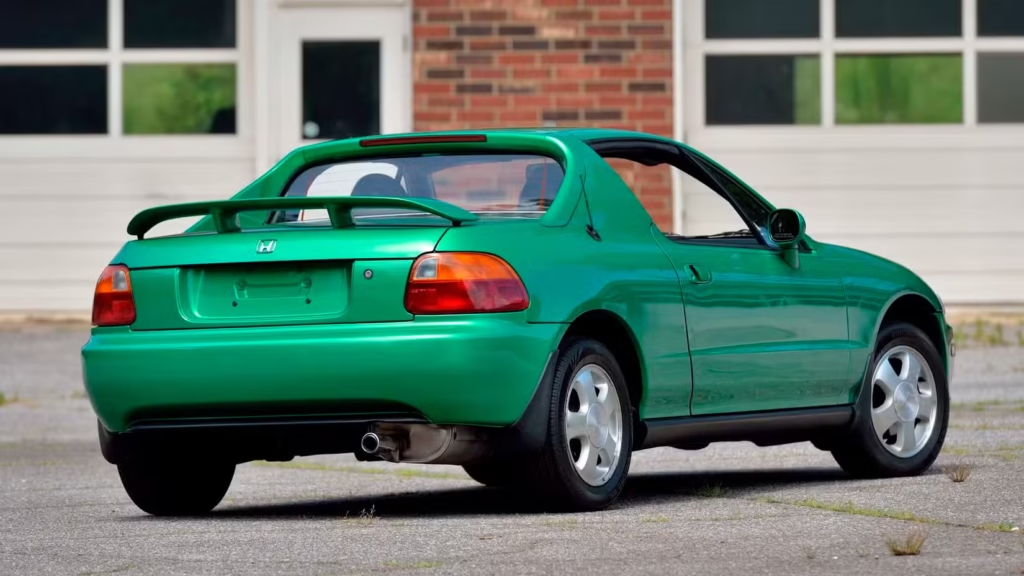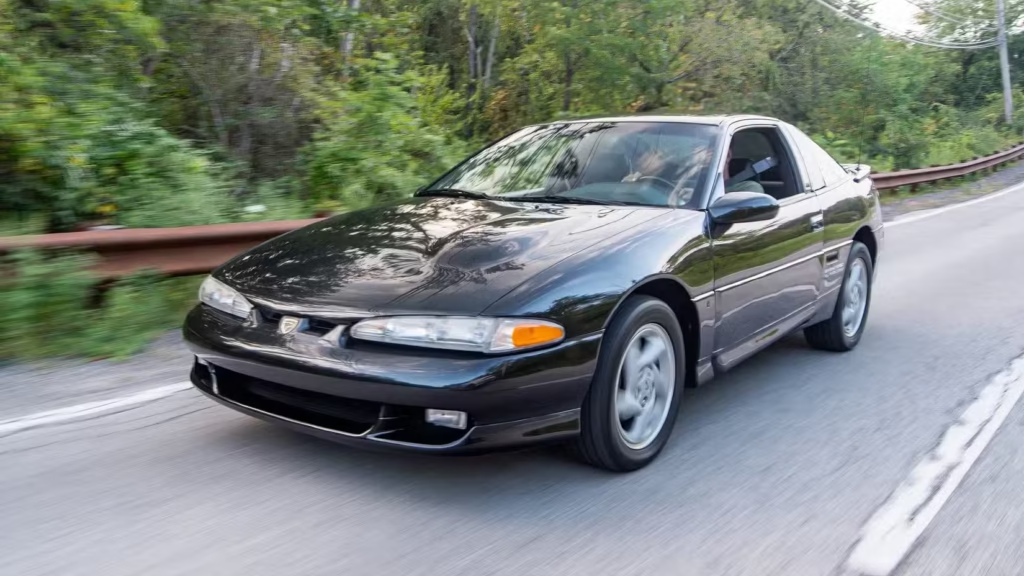In the early 1990s, the automotive world was buzzing with compact sports cars aimed squarely at younger drivers—vehicles built for style, fun, and affordability. Amid a flood of turbocharged coupes, rear-wheel-drive roadsters, and tuner favorites, Honda introduced a car that seemed slightly offbeat. At the time, it was mocked for its peculiar proportions and questioned for its performance chops. That car was the Honda Del Sol. Today? It’s a cult classic.
The Del Sol’s journey from ridicule to reverence is a testament to how perception evolves and how overlooked innovation can eventually shine.
A Roof Off, But Not Off the Rails
The Honda Del Sol debuted in 1992 as the spiritual successor to the beloved CR-X. Officially called the Civic del Sol in some markets, it shared much of its architecture with the fifth-generation Civic—reliable, lightweight, and practical. But Honda wasn’t just recycling parts; they were taking a risk.

The Del Sol introduced something different: a targa-top design. The roof panel could be manually removed and stowed in the trunk, offering a semi-convertible experience. A power rear window dropped into the body, enhancing the open-air vibe. This wasn’t a full convertible, nor was it a traditional coupe—it was somewhere in between.
That ambiguity hurt it.
Critics and consumers weren’t sure what to make of it. The styling, particularly the chunky rear end, drew scorn. The front-wheel-drive layout lacked the purist appeal of rear-driven competitors like the Mazda Miata or Toyota MR2. And while it was built with Honda’s hallmark quality, many dismissed the Del Sol as more gimmick than driver’s car.
Sales Fade, Reputation Sours
Initial sales were respectable. In 1993, Honda sold over 25,000 units in the U.S. But the novelty wore off quickly. By 1997, the Del Sol’s final year in the States, sales had plummeted to just over 5,600. The model exited quietly, overshadowed by more conventional sports cars and tuners.
Worse, the Del Sol became a punchline. Derisively nicknamed “Del Slow,” it was often modified cheaply or neglected outright. Unlike the Miata or Integra, it didn’t build a serious fanbase in real-time. For years, it was an afterthought on used lots and enthusiast forums alike.

Under the Hood: More Than Meets the Eye
Despite the dismissive reputation, the Del Sol wasn’t without merit. Honda offered three variants over its lifespan:
- Del Sol S: Powered by a 1.5-liter SOHC engine producing 102 horsepower.
- Del Sol Si: Upgraded to a 1.6-liter SOHC VTEC unit with 125 horsepower.
- Del Sol VTEC: The crown jewel. It featured a 1.6-liter DOHC VTEC engine (B16A3), delivering 160 horsepower and revving to 8,000 RPM.
In VTEC trim, the Del Sol could sprint from 0 to 60 mph in seven seconds—respectable for its day. Coupled with a lightweight chassis (~2,600 lbs), fully independent suspension, and Honda’s slick five-speed manual transmission, the car offered genuine driving fun. The feedback-rich steering and precise shifter only enhanced the experience.
Inside, the Del Sol was simple but driver-focused. The seating position was low, the visibility was excellent, and the removable roof added an element of carefree cruising. While it lacked flash, it had soul.
The Comeback Kid
Fast forward to today, and the Honda Del Sol is enjoying a renaissance. Enthusiasts are rediscovering its charm—especially those who value analog driving and ’90s aesthetics. Part of its newfound appeal lies in its rarity. Clean, stock examples are hard to find. Many were modified into oblivion or suffered years of neglect. Now, unmolested Del Sols feel like hidden gems.
Prices reflect the shift in attitude. While beat-up base models can still be snagged for under $4,000, mint-condition VTEC versions with low mileage can command $15,000 or more. On auction sites like Bring a Trailer, pristine examples have fetched close to—or even exceeded—the original MSRP from the ’90s.
What changed? Enthusiasts now appreciate the Del Sol for what it wasn’t trying to be: a hardcore racer or luxury grand tourer. Instead, it was an accessible, reliable, and uniquely styled option that offered real joy on the road without pretense.

Standing Out By Staying True
Back in its heyday, the Del Sol competed against some heavyweights: the Miata, MR2, Eclipse, 240SX, and even AWD turbo monsters like the Eagle Talon. All had sharper performance edges. But they also demanded more—more commitment, more maintenance, more money.
The Del Sol, on the other hand, offered something quietly radical: fun without fuss.
Its front-wheel-drive layout may have disqualified it from purist circles, but it also made the car approachable in daily use. It looked like nothing else on the road, and now that ’90s design is back in vogue, that quirkiness feels like a virtue, not a flaw.
A Cult Classic for a New Generation
The Honda Del Sol’s journey isn’t just about one car’s redemption. It reflects how automotive culture matures. What was once mocked can become meaningful. What seemed like an oddball experiment can become a beloved artifact.
Today, the Del Sol stands as a reminder that being different isn’t always a disadvantage—it can be the very reason people fall in love with you later. All it needed was time, perspective, and a little VTEC magic.
So if you spot a clean Del Sol at a car meet, don’t laugh. Tip your cap. You’re looking at a survivor, and perhaps, a future classic in the making.



